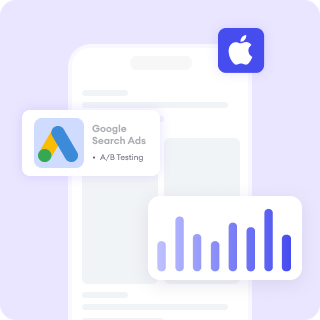On-Page and Off-Page SEO focus on content and relationships but Technical SEO ensures your site is built in a way that search engines can easily crawl, index, and understand.
In this article, we will learn what is technical SEO, why it matters for your site, and the key elements involved in technical SEO. Let’s dive into what it is, why it matters, and how to get started.
What is Technical SEO?
Technical SEO refers to the process of optimizing your website’s infrastructure so that search engines can effectively crawl and index it. It is one of the important steps to make sure it’s fast, secure, and easy to navigate for both search engines and users.
In a nutshell, Technical SEO is about making sure your website works.
Why is Technical SEO Important?
Search engines, like Google, need to understand your website to rank it. If your site is slow, hard to navigate, or filled with technical issues, search engines might skip over it no matter how great your content is.
Benefits of Technical SEO:
- Better Rankings: A technically sound site is more likely to rank higher on search engine results pages (SERPs).
- Improved User Experience: Faster load times and smooth navigation keep users happy and most likely will make users stick around.
- Future-Proofing Your Site: Staying on top of technical best practices ensures your site stays competitive as search engine algorithms evolve.
Key Elements of Technical SEO
Ready to get technical? Here are the most important components of Technical SEO and how to optimize them.
1. Website Speed
Site speed is one of the ranking factors in SERP. A slow site can frustrate users and send them running to your competitors.
How to Improve Site Speed:
- Compress Images: Use tools like TinyPNG or ShortPixel to reduce file sizes without losing quality.
- Enable Browser Caching: This allows users to load your site faster on return visits.
- Use a Content Delivery Network (CDN): CDNs like Cloudflare deliver your site’s content from servers closer to your users.
- Minimize Code: Clean up unnecessary CSS, JavaScript, or HTML to streamline your site.
2. Mobile-Friendliness
With most web traffic coming from mobile devices, having a mobile-friendly website is non-negotiable. Google even uses a mobile-first indexing approach, meaning it prioritizes the mobile version of your site. You can start to check your site's mobile friendliness by testing it on Google’s Mobile-Friendly Test tool. If the result is not good, here's how to optimize it:
How to Optimize for Mobile
- Use responsive design so your site adapts to any screen size.
- Make buttons and links easy to tap.
- Avoid using pop-ups that block the entire screen—these can frustrate users and hurt rankings.
3. Secure Your Site with HTTPS
Search engines (and users) want to know if your site is secure. That’s why HTTPS (the secure version of HTTP) is a ranking factor. If your site isn’t using HTTPS, browsers might flag it as “Not Secure,” which can scare away visitors.
To secure your site, install an SSL certificate (your hosting provider can usually help with this) and always redirect HTTP pages to HTTPS to avoid duplicate content issues.
Learn more: 7 Reasons Why HTTPS Caching Is Better For SEO Than HTTP Caching
4. Crawlability
For search engines to rank your site, they first need to crawl it. If your site isn’t crawlable, search engines won’t even know it exists.
How to Improve Crawlability:
- Create a Robots.txt File: This tells search engines which parts of your site to crawl and which to ignore.
- Fix Broken Links: Use tools like Screaming Frog to identify and repair broken links that might confuse crawlers.
- Submit a Sitemap: A sitemap is a roadmap of your site. Submit it to Google Search Console so search engines can easily find all your pages.
5. Indexing
Once crawled, your site needs to be indexed to show up in search results. However, not all pages should be indexed, for example, duplicate pages or private admin pages.
How to Optimize Indexing:
- Use meta tags like “noindex” to prevent search engines from indexing unnecessary pages.
- Regularly check Google Search Console for any indexing issues or errors.
- Remove duplicate content that could confuse search engines and hurt rankings.
6. Structured Data
Structured data (also known as schema markup) is code that helps search engines understand your content. It’s what enables features like rich snippets (e.g star ratings, images, or additional info). Structured data can help your site stand out in search results, leading to higher click-through rates.
How to Use Structured Data:
- Add schema markup for things like recipes, events, or reviews using tools like Schema.org.
- Use Google’s Structured Data Testing Tool to check if your markup is implemented correctly.
7. Fix Duplicate Content Issues
Duplicate content can confuse search engines and dilute your rankings. This often happens when the same content appears on multiple URLs.
To fix duplicate content issues, you can use canonical tags to tell search engines which version of a page to prioritize. It is also best to avoid creating multiple pages with similar or identical content.
8. Optimize Your URL Structure
URLs should be clean, descriptive, and easy to read. Avoid long, confusing URLs with random numbers and characters.
Best Practices for URLs:
- Use keywords in your URLs (e.g., “/technical-seo-guide” instead of “/page12345”).
- Keep them short and simple.
- Use hyphens to separate words, not underscores.
Learn more: Guide On How To Write URL Structure For Various Industries
Common Technical SEO Mistakes to Avoid
- Ignoring Site Speed: Slow load times can drive users away.
- Neglecting Mobile Optimization: A site that isn’t mobile-friendly can lose rankings and users.
- Broken Links: These can hurt user experience and confuse search engines.
- Overlooking Regular Audits: SEO isn’t a one-and-done process. Regularly check for errors and opportunities to improve.
Conclusion
Technical SEO is an essential part of creating a strong, high-performing website. Think of it as building the foundation of a house where everything else depends on it. When your site is fast, secure, and easy for search engines to understand, you’re setting yourself up for success.
You can start by addressing the basics like site speed, mobile-friendliness, and security. Then, go deeper into advanced areas like structured data and indexing.
Improve your website performance with FoxAdvert!
If you are looking forward on how to improve your website performance, our professional team of SEO experts at FoxAdvert can help you. Contact us today to start your journey 😊











